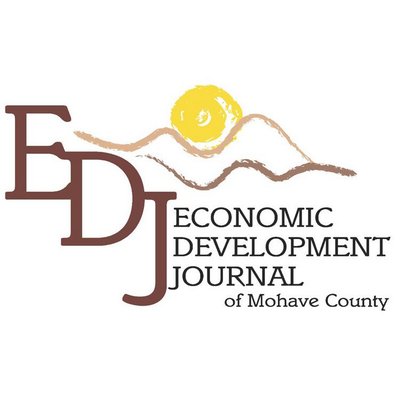NATION — The proposed development of a copper mine near the Chilkat River in Alaska has sparked a contentious debate, weighing economic benefits against environmental and cultural concerns. This area, known for its extraordinary gathering of bald eagles and robust salmon runs, faces potential ecological disruption due to mining activities.
The Chilkat Rive faces imminent threats from the potential development of the Palmer Project by Constantine Metal Resources. The project, exploring a massive sulfide deposit, has raised fears of leaching heavy metals and sulfuric acid into the salmon-rich watershed, endangering the ecosystem that sustains eagles, bears, and local communities.
The Chilkat Rive faces imminent threats from the potential development of the Palmer Project by Constantine Metal Resources. The project, exploring a massive sulfide deposit, has raised fears of leaching heavy metals and sulfuric acid into the salmon-rich watershed, endangering the ecosystem that sustains eagles, bears, and local communities.
In November, bald eagles converge in large numbers on the Alaska Chilkat Bald Eagle Preserve. Photographer Mario Benassi likens this annual phenomenon to a wildlife migration spectacle. Geothermal springs keep the river unfrozen, allowing for an abundant salmon run, crucial for the Eagles. The state’s recent approval for exploring copper extraction, backed by Governor Mike Dunleavy’s job creation rationale, has raised alarms among environmentalists and residents. Concerns center around toxic runoff, which could devastate the river, the salmon, and consequently, the eagles’ habitat.
Mining representatives emphasize their commitment to environmental protection, but skepticism remains widespread among scientists, locals, and advocacy groups like Salmon Beyond Borders. The transboundary region of northwestern North America, rich in coal and metals, also harbors some of Earth’s most productive and least disturbed salmonid habitats. The comprehensive review in July’s paper pointed out failures in mining operations to meet water quality goals and the underestimation of cumulative effects from multiple mines and other stressors.
Salmon support more than 100 species directly or indirectly, with their presence influencing local ecosystems visibly. The ecological impact of salmon on vegetation and other species demonstrates their integral role in the environment. Mining disasters, like the 2014 dam failure at British Columbia’s Mount Polley Mine, have heightened fears. That incident led to significant wastewater and mine tailings spilling into a lake and creek, affecting one of the region’s crucial salmon habitats.
Legal challenges have emerged as a primary tool against the project. A tribe and environmental groups filed a lawsuit alleging that the Bureau of Land Management failed to consider the cumulative impacts of future development on the salmon habitat and the eagle congregation. Local Tlingit elder Lani Hotch emphasized the cultural and ecological significance of the area, highlighting the long-standing symbiotic relationship between the community, eagles, and salmon.
While the lawsuit progresses, exploration permits continue to be issued, furthering the mining project’s advancement. Activists suggest designating the Chilkat River as a Tier Three outstanding national resource water under the Clean Water Act to provide the highest level of protection and ban discharges that threaten water quality or endanger fish.
Representatives from Constantine Metal Resources have expressed their commitment to protecting the natural environment during operation and after mine closure. However, their refusal to discuss future plans has done little to alleviate concerns. Alaska’s Department of Fish and Game downplays the risk to eagles and the potential environmental impact, citing technological advancements in the industry. However, skepticism remains among Federal Fish and Wildlife Service specialists and other environmentalists.
The geographic and seismic characteristics of the region add another layer of complexity. Gershon Cohen of Alaska Clean Water Advocacy highlights the risk posed by earthquakes in one of the world’s most seismically active areas. With Haines receiving significant rain and snow annually, and recent seismic activity including a substantial 6.3-magnitude earthquake, concerns about the mine’s stability and potential for environmental contamination are amplified.
The Mount Polley incident is not isolated. A United Nations Environment Programme report highlighted 40 mining waste failures in the past decade, underscoring the potential danger of such projects. Joe Ordonez, a local tour operator, emphasizes the unique and unspoiled nature of the Chilkat River area. The community is divided, with some supporting the mine for economic reasons, while others, like commercial fisherman JR Churchill, worry about the fragile balance of the watershed and the catastrophic consequences of even a minor mishap.
While the mining industry assures improved practices and technologies, the combination of environmental, cultural, and economic factors makes this a complex and highly contentious issue. The potential impact on the world’s largest congregation of Bald Eagles and the robust salmon runs essential to the local ecosystem and economy necessitates careful consideration. The balance between economic development and environmental preservation remains a challenging and ongoing debate in Alaska.
Jeremy Webb
Based in Mohave Valley, Arizona, Jeremy Webb is a dedicated website designer and developer with a keen eye for detail. Transitioning from a background in retail sporting goods management, he now crafts digital spaces that resonate with audiences. Beyond the screen, Jeremy is a passionate writer, delving into topics ranging from business innovations and Arizona’s unique landscapes to the latest tech trends and compelling local narratives. Visit his website at JeremyWebb.Dev




























